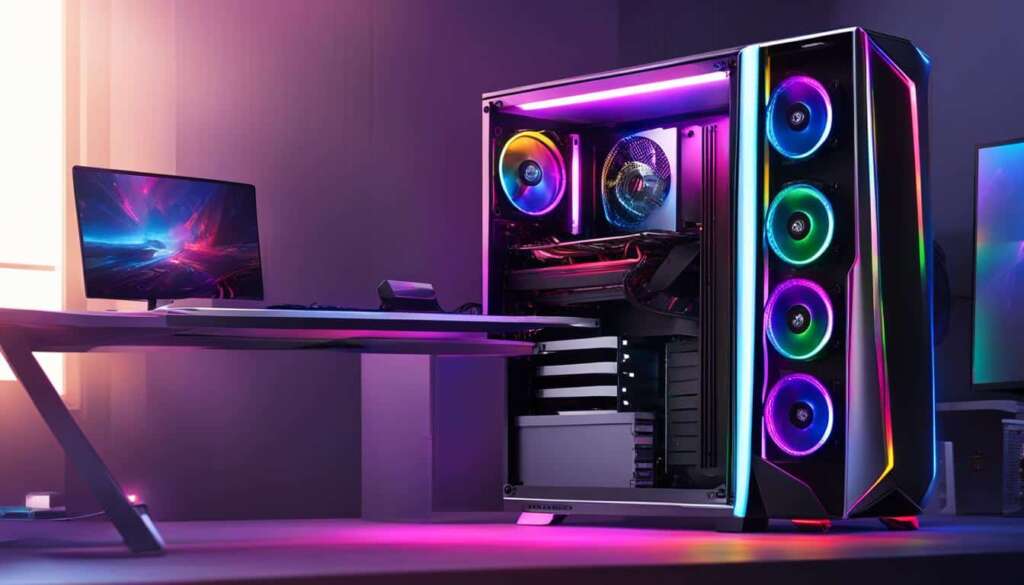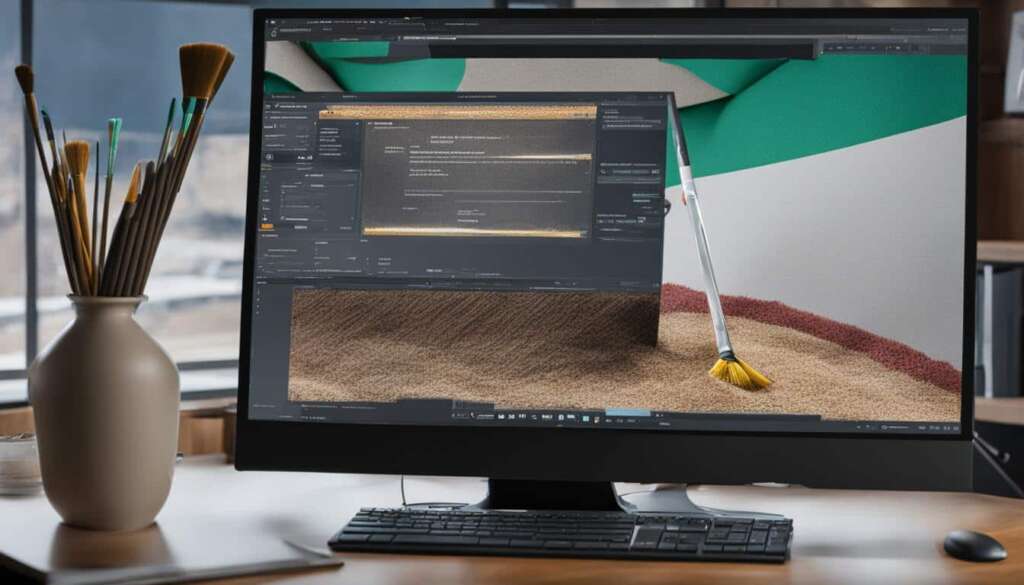Table of Contents
Are you a gaming enthusiast looking to take your gaming experience to the next level? Or perhaps a parent who wants to bond with your kids over a shared love for gaming? Look no further! In this ultimate guide, we will explore the exciting world of gaming PCs and how they can elevate your gaming sessions.
A gaming PC offers a myriad of benefits, including superior performance, customizable options, and an unparalleled sense of accomplishment. Whether you’re a seasoned gamer or a beginner, understanding the specifications and components of a gaming PC is essential.
From processors and graphics cards to storage and power supply units, each component plays a pivotal role in delivering optimal performance. By gaining an understanding of these components, you’ll be equipped to choose the best options for your gaming needs.
But the journey doesn’t end there! Building your gaming PC from scratch can further enhance your gaming experience. Imagine the satisfaction of assembling your own machine, perfectly tailored to your preferences.
Our step-by-step guide will walk you through the process of building your gaming PC, from installing the CPU and graphics card to connecting storage drives and setting up cooling systems. We will also provide troubleshooting tips to ensure a smooth and successful build.
Customization is key, and we’ll explore the various options available for personalizing your gaming rig. From performance optimization through software tweaks to adding RGB lighting for a touch of flair, you can truly make your gaming PC a reflection of your unique style.
So whether you’re looking to dive deep into the world of gaming or simply upgrade your current setup, this guide is your go-to resource. Let’s embark on this exciting journey together and create the ultimate gaming experience.
Understanding PC Components for Gaming
A gaming PC is a complex system that relies on several key components to deliver optimal performance. Each component plays a crucial role in creating an immersive gaming experience. Let’s take a closer look at these essential components:
CPU (Central Processing Unit): Often referred to as the brain of the PC, the CPU is responsible for executing instructions and running games smoothly. It performs calculations and processes data to ensure the game runs flawlessly. Popular brands include Intel and AMD, with processors ranging from entry-level options to high-end powerhouses.
GPU (Graphics Processing Unit): The GPU renders in-game graphics and brings the visuals to life. It is specifically designed to handle complex graphical tasks and ensures that the game looks stunning. NVIDIA and AMD are the leading manufacturers of GPUs, offering a range of options for different gaming needs and budgets.
Motherboard: The motherboard acts as the central hub, connecting all the components of the PC. It provides power and communication channels between the CPU, GPU, RAM, storage drives, and other peripherals. Choosing a compatible and reliable motherboard is crucial for a stable and efficient gaming PC.
RAM (Random Access Memory): RAM plays a vital role in gaming by providing temporary storage for data that the CPU needs frequently. Higher RAM capacity allows for smoother multitasking and faster data retrieval, resulting in improved gaming performance. It is recommended to have a minimum of 8GB, with 16GB or more for optimal gaming experiences.
Storage Drives: Storage drives store games, applications, and data on your gaming PC. There are two primary types: solid-state drives (SSDs) and hard disk drives (HDDs). SSDs provide faster loading times and transfer speeds, while HDDs offer larger storage capacities at a lower cost. Many gamers opt for a combination of both for optimal performance and storage capacity.
Power Supply Unit (PSU): The PSU delivers power to all the components of the gaming PC. It is important to choose a PSU with sufficient wattage and efficiency to meet the power requirements of your components. A reliable and high-quality PSU ensures stable performance and protects your PC from power-related issues.
Cooling Systems: Gaming PCs generate a significant amount of heat during heavy gaming sessions. Cooling systems, including fans, heat sinks, and liquid cooling solutions, help dissipate heat and prevent overheating. Proper cooling is essential for maintaining optimal performance and extending the lifespan of your components.
By understanding the role of each component and selecting the right hardware, you can build a powerful gaming PC that delivers exceptional performance and an immersive gaming experience.
Processor and Graphics Card Selection
The choice of the CPU and GPU is crucial when building a gaming PC. These components greatly impact gaming performance and determine the quality of visuals in games. When selecting a CPU, there are several factors to consider.
Brand: The two major contenders in the CPU market are Intel and AMD. Both brands offer a range of processors with varying performance levels and price points.
Core count: The number of cores in a CPU affects its multitasking capabilities and overall processing power. Higher core counts generally result in smoother gameplay and better performance.
Overclocking potential: Overclocking allows you to increase the clock speed of your CPU, extracting more performance from it. If you’re an enthusiast or professional gamer, you may want to consider CPUs known for their overclocking potential.
Similarly, the choice of GPU is crucial for delivering immersive gaming experiences with stunning visuals. Consider the following factors when selecting a graphics card:
VRAM size: The amount of VRAM (Video Random Access Memory) on a graphics card affects the textures and graphics quality in games. Higher VRAM sizes are recommended for playing games at higher resolutions and with more complex graphics.
Ray tracing: Ray tracing technology enhances the realism of in-game lighting and reflections. GPUs with dedicated ray tracing cores can deliver breathtaking visuals and create a more lifelike gaming experience.
DLSS technology: DLSS (Deep Learning Super Sampling) technology, available on certain NVIDIA GPUs, uses AI to upscale lower-resolution frames, resulting in improved image quality and performance.
It’s important to note that there are options available for all budgets when it comes to CPU and GPU selection. High-end CPUs and graphics cards cater to enthusiasts and professionals seeking top-of-the-line performance, while more affordable options still provide excellent gaming experiences for budget-conscious gamers.
CPU and GPU Comparison
| CPU | Intel | AMD |
|---|---|---|
| Brand | Known for their strong single-core performance and gaming optimization. | Offer a wide range of options, known for their strong multi-core performance and value for money. |
| Core Count | Typically lower core counts, but offer higher clock speeds for single-threaded tasks. | Offer higher core counts, providing better multitasking capabilities. |
| Overclocking Potential | Known for their overclocking potential, making them popular among enthusiasts. | Offer competitive overclocking potential at more affordable price points. |
Table: Graphics Card Comparison
| GPU | VRAM Size | Ray Tracing | DLSS Technology |
|---|---|---|---|
| NVIDIA | Offers a variety of options with different VRAM sizes to suit various gaming needs. | Features dedicated ray tracing cores for enhanced visuals. | Supports DLSS technology for improved performance and image quality. |
| AMD | Offers a range of GPUs with competitive VRAM sizes. | Provide ray tracing capabilities with their latest generation of graphics cards. | – |
With a wide range of options available, careful consideration of CPU and GPU selection is essential to ensure optimal gaming performance and visual quality.
Step-by-Step Guide to Building a Gaming PC and Performance Optimization
Building a gaming PC is an exhilarating journey that allows you to unleash your creativity and create a bespoke masterpiece. This step-by-step guide will walk you through each stage of the process, from assembling the components to optimizing performance.
The first step is to install the CPU, the heart of your gaming PC. Carefully align the CPU with the socket on the motherboard and secure it in place. Next, mount the motherboard in the case using the provided screws to ensure a stable foundation for your PC.
Once the motherboard is secure, install the memory modules into their designated slots. Follow the motherboard’s manual for the correct configuration. Then, proceed to install the graphics card into the appropriate PCIe slot, ensuring it is firmly seated. Connect the necessary power cables to the graphics card as well.
With those key components in place, it’s time to connect the storage drives and install the power supply unit. Connect the SATA or M.2 cables to the storage drives for data transfer. Ensure all necessary power cables are connected to the drives and other components. Complete the setup by installing the cooling system, ensuring proper airflow and heat dissipation.
After assembling your gaming PC, it’s essential to perform system benchmarking to assess its performance. Utilize software tools to run stress tests and evaluate the stability and heat management of your system. If any issues arise, refer to the troubleshooting tips provided to identify and resolve common problems.
Through this step-by-step guide, you will not only have a fully functional gaming PC but also gain the knowledge and skills to customize and optimize its performance. Happy gaming!
FAQ
What is a gaming PC?
A gaming PC is a computer specifically designed and optimized for playing video games. It consists of various components that work together to deliver optimal gaming performance.
What components are essential for a gaming PC?
The essential components of a gaming PC include the CPU, GPU, motherboard, RAM, storage drives, power supply unit, and cooling systems.
How do I select the right CPU and GPU for my gaming PC?
When selecting a CPU, consider factors such as the brand (Intel vs AMD), core count, and overclocking potential. For the GPU, consider factors like VRAM size, ray tracing, and DLSS technology.
How do I build my own gaming PC?
Building your own gaming PC involves installing the CPU, motherboard, memory modules, graphics card, storage drives, power supply unit, and cooling systems. It also includes BIOS configuration, system benchmarking, troubleshooting, and performance optimization.







